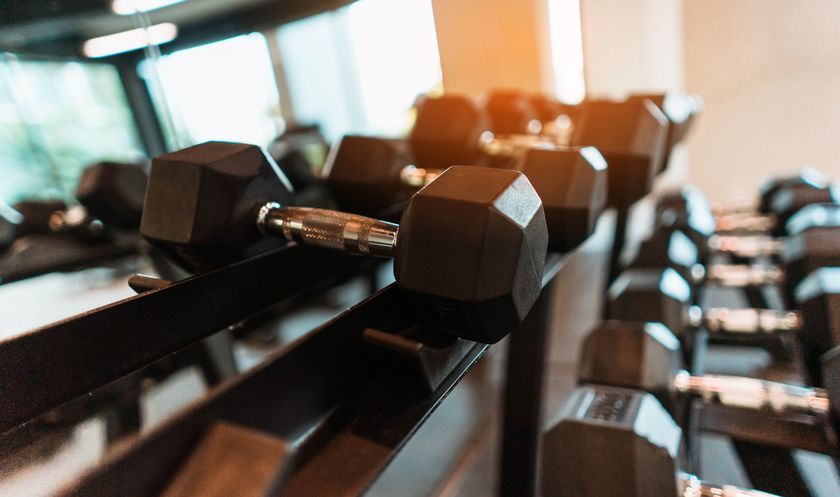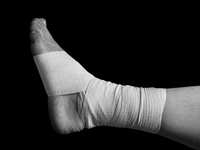- Categories :
- More
Gym Safety and Cleanliness: 20 Tips from a Physical Therapist

Navigating the gym can be intimidating especially when considering the importance of safety and cleanliness.
Here are tips from Dr. Justin Bickford, PT, DPT, OCS, FAAOMPT, Memorial Hermann physical therapist in north Houston, offers his top 20 tips for safety, good health and proper etiquette at the gym:
- If you arrive sweaty or dirty, be sure to shower before you exercise.
2. Never walk barefoot at the pool, locker room or gym. Wear flip flops or sandals in the shower to protect yourself from contracting athlete’s foot, staph infections, plantar warts and other skin conditions due to contaminated surfaces.
3. Dress in comfortable moisture-wicking workout wear to avoid fungal skin conditions and wear appropriate sports shoes while exercising to provide proper support and protection—and prevent falls.
4. Don’t expect fitness clubs to provide weight belts, wrist wraps or gloves. And bring your own yoga mats if you’re unsure if they have been thoroughly cleaned after each use.
5. Cover any cuts or scrapes until they fully heal. Redness, pus or swelling may indicate signs of infection and should be reviewed by your health care provider.
6. Stay home if you have flu, RSV or COVID-19 until you’re no longer contagious. If unsure, check with your doctor.
7. Warm up for at least three to five minutes before working out.
8. Wipe down equipment. “If you’re worried about hygiene, wipe down equipment before you use it,” Dr. Bickford says. “Always wipe it down after.” In addition, use antibiotic wipes or foam regularly so you avoid catching an illness when touching your face.
Wipe down stretch mats before and after use, he says.
9. Ask staff at the front desk if you’re unsure how to use equipment or perform an exercise. You also might consider working with a trainer. “Asking for help is a strength, not a weakness,” he says.
10. Mind your own routine. “Don’t offer advice to others—unless they ask for it,” Dr. Bickford says.
11. Avoid lifting heavy barbells above your head without a spotter. “Having a workout partner helps not only with safety but also compliance,” he says.
12. Don’t rush progress. If you aim to increase intensity, duration, repetitions or heaviness of weights, do so by 10% weekly, at most. Otherwise, you might risk injury.
13. Listen to your body. That means accepting that you may have occasional off days and subpar performances. “If you can’t do it right, do it light,” he says. “The adage no pain, no gain has been proven wrong. Not all pains are created equal.”
The former is a sign of muscles breaking down and rebuilding more strongly. The latter can lead to stiffness or osteoarthritis and put you at danger of needing surgery in the future.
14. Use mirrors to guide your form and your full range of motion. Protect your knees by making sure they’re directly over your ankles when you squat, and your abs are contracted and your body is in a straight line when you plank, and your feet are correctly placed as you stretch.
15. Accept that you may not be able to lift as much as others. “If you lift for ego, you’re lifting for injury,” Dr. Bickford says. “Focus more on quality than quantity.” Control your motion and keep proper form rather than swinging or dropping weights or straining your neck.
16. Your entire core is the key to strength without strain, and you should exercise from your shoulders to your feet. “Your body is like a Lamborghini. You can’t just maintain one part and expect it to run smoothly,” he says.”
17. Be considerate of others. Try not to spend excess time on one piece of equipment. Only use the squat rack for squats and return dumbbells and barbells as soon as you use them. Also don’t sit motionless on machines as you scroll on your phone. Input your workout numbers later or elsewhere. And never reserve a machine by putting a towel or water bottle on it and then walking off.
18. Re-rack your weights properly, in the correct slots. “If you’re strong enough to lift the weight, you’re strong enough to rack the weight,” Dr. Bickford says. “That applies not only to dumbbells but barbells. And even if someone left a weight on the bar, be the bigger person: Remove it after you use it and put it back on the rack in the right spot.”
19. After your workout, cool down until your heart rate slows, usually within 3 to5 minutes.
20. Stretch, holding each one at least 30 seconds to lengthen muscles. “Stretching helps protect muscles that are in a weakened state after exercising,” he says. “Delayed onset of muscle soreness may not show up until the next day or the day after.”
















